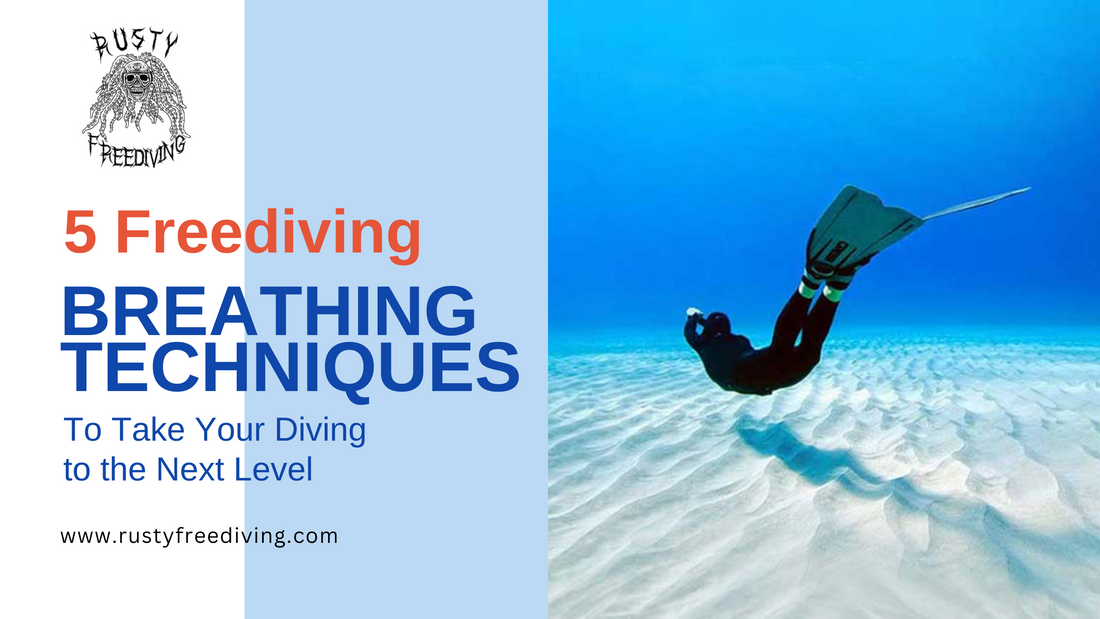Freediving is an exhilarating experience that allows you to explore the underwater world in a single breath. However, mastering the art of breath control is essential if you want to dive deeper, stay longer, and do so safely. Your ability to manage your breathing can directly impact your overall performance and comfort during a dive. Whether you're a beginner or an experienced diver, using the proper techniques can take your freediving to the next level. Let us explore five essential breathing techniques that can help you improve your lung capacity, enhance your breath hold, and increase your confidence in the water.
Diaphragmatic Breathing
Diaphragmatic breathing, also known as abdominal breathing, is crucial for freediving. This technique focuses on filling your lungs by expanding your diaphragm, ensuring more air intake than shallow chest breathing. To practice this, lie on your back and place one hand on your chest and the other on your abdomen. Inhale deeply through your nose, ensuring your stomach rises while your chest remains still. Exhale slowly through your mouth. By engaging your diaphragm, you increase oxygen intake, allowing you to stay underwater longer. Diaphragmatic breathing also helps calm your mind, reducing anxiety before your dive. Regular practice of this technique will help you maximise your lung capacity and improve breath-hold times. Making this breathing method a habit is essential, as it provides a stable foundation for more advanced freediving techniques.
Box Breathing
Box breathing, a method often used by athletes and military personnel, is a simple yet powerful technique to improve breath control and focus. It involves inhaling, holding, exhaling, and holding again, each for a count of four seconds. To begin, sit in a comfortable position, inhale deeply through your nose for four seconds, hold your breath for four seconds, exhale for four seconds, and hold again for four seconds. This cycle helps you manage anxiety, increase lung capacity, and control your breathing rhythm during a dive. Box breathing also strengthens your mental resilience, which is essential for freediving. Practising this regularly can significantly lower your heart rate, promoting relaxation before you dive. Over time, you'll find that your ability to remain calm and collected underwater will improve, helping you dive deeper and for longer durations.
Pursed Lip Breathing
Pursed lip breathing is a technique that can slow down your exhalation, which is critical for conserving oxygen during a dive. Start by inhaling slowly through your nose, then purse your lips as if you were going to whistle, and exhale slowly. This method keeps your airways open longer, ensuring a steady release of carbon dioxide and better breath control. The slow exhale also helps relax your body and mind, which is essential in keeping your heart rate low during freediving. By practising pursed lip breathing, you'll find it easier to maintain composure under pressure. It also improves your overall lung function, making it an excellent exercise for beginner and advanced freedivers looking to extend their dive times and enhance their underwater experience.
Equalisation Breathing
Equalisation breathing is not just about managing pressure changes but also about optimising your breath for efficient equalisation. Before a dive, practice slow, controlled breathing to prepare your body for the dive. During descent, it's crucial to keep breathing calm and focused to avoid rapid air depletion and ensure enough oxygen for equalisation. This is particularly important when diving more profoundly, as the pressure increases and equalisation becomes more challenging. Effective equalisation breathing helps prevent discomfort in the ears and sinuses, enabling you to dive deeply quickly. As you practice, focus on relaxation and timing, ensuring each breath is steady and controlled. Over time, this technique will improve your overall freediving experience by allowing you to equalise smoothly and reduce the risk of injury.
Progressive Relaxation Breathing
Progressive relaxation breathing is designed to help you mentally and physically prepare for a dive. This method involves consciously relaxing each muscle group while maintaining slow, deep breaths. Start by inhaling deeply, then exhale while visualising your body becoming lighter and more relaxed. Begin with your feet and slowly work up to your head, ensuring each area feels loose and tension-free. Progressive relaxation breathing helps reduce stress and conserves energy, which is critical during freediving. The more relaxed you are, the less oxygen your body will use, allowing you to stay underwater longer. It also sharpens your focus, making it easier to manage the challenges that come with deeper dives. By incorporating this into your pre-dive routine, you'll improve both your mental and physical performance underwater.
Conclusion
Mastering these five breathing techniques will help you take your freediving to the next level. Whether focusing on increasing lung capacity, controlling anxiety, or conserving energy underwater, each method plays a crucial role in your overall diving performance. The key to success in freediving is practice and patience. By consistently incorporating these techniques into your training, you'll dive deeper, stay longer, and enjoy a more fulfilling underwater experience. Safety always comes first, so never rush the process and dive within your limits.

